It first caught my eye sometime before Christmas. A corner store on Corso Cavour, not far from the L’Officina del Gelato – in fact, almost across the street. It was displayed in the window that faced the cross street, whatever it’s called, on the middle mannequin.
A white sweater. I don’t normally take to sweaters with zippers, but this one got me from the get go. It was bulk knit, with a kind of cable pattern, but not your typical cable. It could zip into a turtleneck (and I love turtlenecks) and the inside of the collar was lined with something that looked like lamb’s wool. I saw it, and I knew I was meant to wear it someday.
But it was just before Christmas, I had overspent my monthly (self-imposed) allowance, and prices would drop after Epiphany. So, I’d wait. Two days later I had second thoughts, and went back to the corner window. The sweater was gone. Oh, well. Not meant to be.
About a week later in a window across the street and a bit towards Piazza della Reppublica, the sweater appeared again. The previous window had displayed it under a jacket, but this time it was alone in all its splendor. One look convinced me that I should buy it, and buy it now. But it was riposa, the afternoon closing. I promised myself to check back later that evening. The evening came, something else caught my attention, and I forgot.
The next morning, I woke up determined to go back as soon as the shops opened. I did. The sweater was no where to be seen. Weird. I checked the surrounding shops in case I’d been mistaken. Nothing. The shop in question was one of those really gorgeous places that always intimidate me. I feel like I’d have to already be wearing their clothes in order to meet the dress code. So, I decided not to go in to inquire, and bid the white sweater goodbye.
A couple of days ago, during riposa, I was on my way up to the “supermarket” at the end of my daily walk, and in a window across the street and a little ways down, was the sweater, displayed as the first time, under a jacket. The tag on it said €36. That’s a good price, I thought. Epiphany has passed, the prices are as low as they’re likely to be, I’m going to buy it. But it was riposa, so I did my grocery shopping and vowed to come back later. The evening came, something else caught my attention, and I forgot.
Yesterday morning, I woke up determined to buy the white sweater at some point. The fact that the sales were on, the crowds were gone, and it was Wednesday (who knows why that counted?) gave me confidence that the sweater was going to be on display for awhile. But I’d take no chances. At the end of my walk today, on my way up to the “supermarket,” I peered into every store along Corso because I wasn’t entirely confident I had remembered the location correctly.
Someone had put dry ice into a storm drain along the way. It oozed onto the street quite eerily. This should have been a warning.
I arrived at the shop across the street and a little ways down from the “supermarket.” The tags there look familiar. I think this is the store. But the sweater is no longer on display. This time, I’m going in. It’s five o’clock, they’re open, nothing is stopping me.
“Buona sera.”
The young lady replies. I describe the sweater and mention that I think I saw it in this display window the day before. Does she remember?
“Oh, we have sweaters here with zippers, and there with zippers.” “No, you see, I don’t absolutely need a sweater, I just liked this sweater,” I explain.
She laughs.
“Have you changed the display recently?”
“No.”
“So this sweater I’m describing doesn’t ring any bells?”
“I’m sorry, no.”
“Oh. I must have the wrong shop.
I walked all the way back down Corso Cavour to Piazza Cahen. No sweater. I walked all the way up Corso Cavour until I had nowhere to go except over the cliff. No sweater.
I decided I would walk down, ask the young woman again. On the way, close to where I first sighted the sweater (and while I was gazing over the cliff edge contemplating the faltering state of my sanity) two young men had planted themselves and were singing. They had the voices of angels, a perfect blend, and were presenting an impromptu concert of mostly-American acoustic pop. I couldn’t figure out what their native language was. The lyrics seemed to be in English, but I couldn’t say for sure. When I applauded, one of them said “Gracias” instead of “Grazie.” Maybe they were Spanish? I reached into my pocket for some change. All I had was a penny. I couldn’t give them a penny, they deserved at least a euro.
I had forgotten to buy milk when I was at the “supermarket” earlier, so I went back down. I’d buy the milk, get change, and return. The milk was bought, the change was had. While I was there, I looked again at the display window across the street. Of course, nothing had appeared in my absence. You never know.
I walked back up, and gave the young men two euro. They sang “Hallelujah.”
I returned to the clothing store this morning hoping to find the owner. Surely she would have more knowledge of stock, memory of display. She’s very nice, the owner. I described the white sweater in detail. She showed me sweaters here with zippers and there with zippers. After I had rejected those, I waited for her to go to “the back” to see what she had in stock that fit my description. No. There is no “back,” what you see is what there is.
Now here’s the thing; she had no recollection of the sweater that I saw in her window two days earlier. Not even a glimmer.
Maybe the whole drama was all a cleverly contrived, live episode of Twilight Zone. Or maybe it’s just Italy.



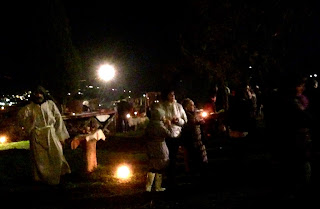








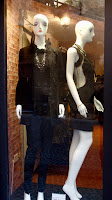


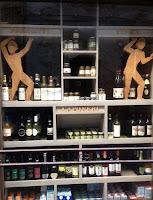
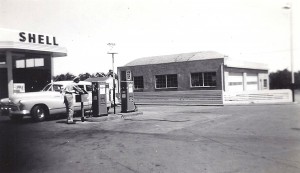 chnology.
chnology.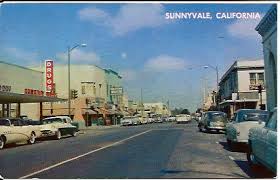 as-yet-to-be-completed “planned downtown.” The single block from before the devastation of 1980 that was allowed to remain is the only part of the downtown area that continued to flourish.
as-yet-to-be-completed “planned downtown.” The single block from before the devastation of 1980 that was allowed to remain is the only part of the downtown area that continued to flourish. pushed through, and I followed the same path on a sidewalk still surrounded by trees.
pushed through, and I followed the same path on a sidewalk still surrounded by trees.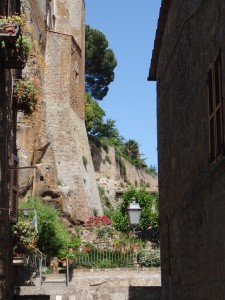 My days are a luxury. I can write without distraction, settled into an pleasant rhythm made possible by retirement income. I don’t need a car because I never have to leave town. Should that change, I can catch a train. I live on a fringe, only gently touched by the daily struggles that people here, as anywhere, are faced with. The thrum of modern life attracts with a similar pull as in other less insular towns, but I can ignore it.
My days are a luxury. I can write without distraction, settled into an pleasant rhythm made possible by retirement income. I don’t need a car because I never have to leave town. Should that change, I can catch a train. I live on a fringe, only gently touched by the daily struggles that people here, as anywhere, are faced with. The thrum of modern life attracts with a similar pull as in other less insular towns, but I can ignore it.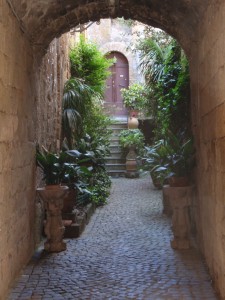
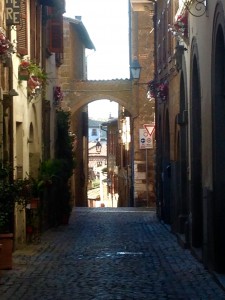 downtowns. That helps. But ease cowers from traffic and institutionalized commercialism, and urban spread depends on those. In such environments it takes deliberate effort to lure ease into daily life; an interesting conundrum.
downtowns. That helps. But ease cowers from traffic and institutionalized commercialism, and urban spread depends on those. In such environments it takes deliberate effort to lure ease into daily life; an interesting conundrum.